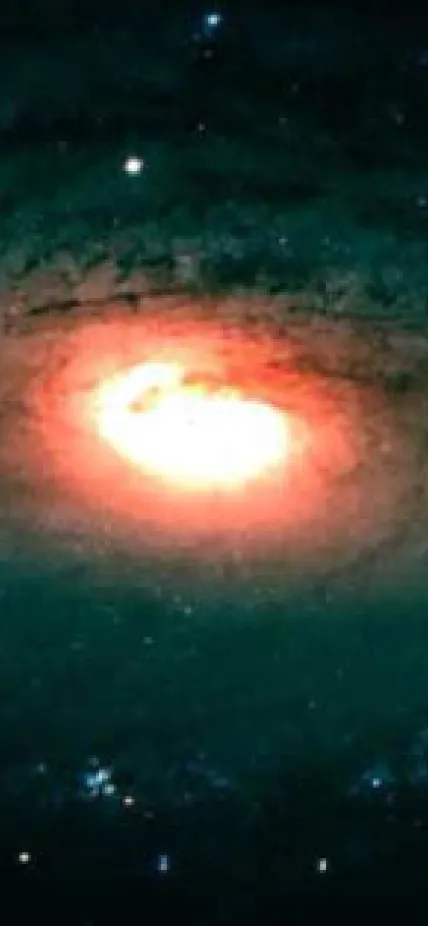Pasadena, CA—A team of researchers including Carnegie’s Mansi Kasliwal and John Mulchaey used a novel astronomical survey software system—the intermediate Palomar Transient Factory (iPTF)—to link a new stripped-envelope supernova, named iPTF13bvn, to the star from which it exploded. The iPTF team also pinpointed the first afterglow of an explosion called a gamma-ray burst that was found by the Fermi satellite. Their work will be published by Astrophysical Journal Letters in two papers led by Yi Cao and Leo Singer, both of the California Institute of Technology.
Their findings reflect the first time a star has been linked to the resulting explosion for this type of supernova, called Type Ib. The discovery offers very important answers about how this supernova type is formed, a problem that has eluded scientists for years.
About a third of all supernovae of massive stars are of the type Ib. There are several theoretical models as to how they are formed, including mass transfer due to solar winds between a pair of binary stars. It is thought that the progenitors are either massive helium stars or a type of very large, very hot stars known as Wolf Rayet stars.
“Pinpointing a progenitor star at exactly the same location as a Type Ib supernova was the best way to test the theories about the genesis of this type of explosion,” Kasliwal said. “Now we need to patiently wait for the supernova to fade away and see if the star disappears.”
The new supernova was discovered in mid-June. No explosive light source was detected even a day earlier. Baby pictures of this one-day-old supernova were promptly taken by telescopes in the radio, X-ray, ultra-violet and infrared wavelengths, providing vital clues about its origins.
Detailed analysis of different types of observations of the supernova confirmed that it was, indeed, a Type Ib, and that it reached full luminosity two weeks from its initial explosion. The team detected a progenitor candidate for the explosion in Hubble Space Telescope imaging, linking the supernova to its predecessor star. Future imaging will help identify whether this progenitor was a single star, a binary star, or a star cluster. The team thinks that their observations are consistent with the progenitor having been a Wolf Rayet star. If so this would be a breakthrough discovery.
The subject of the team’s second paper using data from the new software system is a gamma ray burst afterglow called iPTF13bxl.
Gamma ray bursts are high-energy explosions that form some of the brightest celestial events. They can signify energy released during a supernova. Each burst is followed by an afterglow, which emits lower wavelength radiation than the original explosion.
Soon after the detection of a gamma-ray burst by the Fermi satellite, the team started hunting for the afterglow over a huge field more than 360-times the size of the full moon. They then had to narrow a list of more than 27,000 gamma-ray burst candidates down to a single afterglow. Follow-up research confirmed the relationship between the iPTF13bxl afterglow and a particular gamma-ray burst called GRB130702A.
The team then used the Magellan telescope to find the afterglow’s so-called redshift value, which is a measurement of how much the light from it that reaches us on Earth has been stretched by the expansion of the Universe. Thus, it reveals the afterglow’s distance and tells astronomers where to look for an object, such as a supernova, which might emerge in the wake of the explosion.
“The sophisticated intermediate Palomar Transient Factory software we used to identify iPTF13bxl now prepares us to locate about 10 gamma-ray bursts every year going forward,” said Mulchaey. “And future endeavors could help us identify other, fainter signatures, such as those accompanying the merger of binary neutron stars.”
The afterglow discovery was an important milestone on the road to the goal of being able to detect light from gravitational waves in the cosmos, for which scientists have been searching for decades.
Caption: Supernova iPTF13bvn before and after the explosion. Image is courtesy of Iair Arcavi and uses data from the Keck II Telescope and the Hubble Space Telescope.
__________________
The iPTF13bvn work was supported by two Hubble Fellowships, a Carnegie-Princeton Fellowship, and a NSF Astronomy and Astrophysics Postdoctoral Fellowship, as well as grants from ISF, BSF, GIF, Minerva, the EU, and the NSF, in addition to a Kimmel Award.
The iPTF13bxl work was supported by NSF, the Hubble Fellowship, the Carnegie-Princeton Fellowship, the Israeli Ministry of Science, the I-CORE program, and the RCSA Cottrell Scholar Award.
This work was based on observations obtained with the Samuel Oschin Telescope 48-inch and the 60-inch Telescope at the Palomar Observatory as part of the Intermediate Palomar Transient Factory project, a scientific collaboration among the California Institute of Technology, Los Alamos National Laboratory, the University of Wisconsin, Milwaukee, the Oskar Klein Center, the Weizmann Institute of Science, the TANGO Program of the University System of Taiwan, and the Kavli Institute for the Physics and Mathematics of the Universe.
The intermediate Palomar Transient Factory (iPTF)—led by the California Institute of Technology (Caltech)—started searching the skies for certain types of stars and related phenomena in February. The iPTF was built on the legacy of the Palomar Transient Factory (PTF), designed in 2008 to systematically chart the transient sky by using a robotic observing system mounted on the 48-inch Samuel Oschin Telescope on Palomar Mountain near San Diego, California.
The Carnegie Institution for Science (carnegiescience.edu) is a private, nonprofit organization headquartered in Washington, D.C., with six research departments throughout the U.S. Since its founding in 1902, the Carnegie Institution has been a pioneering force in basic scientific research. Carnegie scientists are leaders in plant biology, developmental biology, astronomy, materials science, global ecology, and Earth and planetary science.
